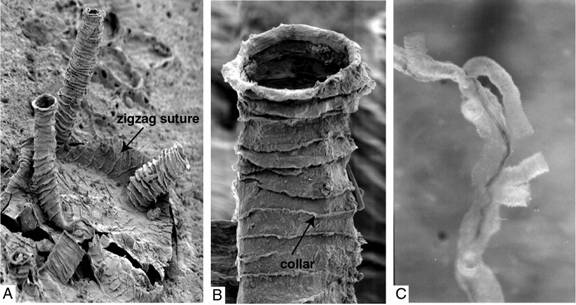
GLY 103 (Field Trip) GLY 104 GLY 137 GLY 215 (Field Trips) GLY 216 (Field Trip) UGC 303 GLY 532
GLY 532: Colonial Paleobiology
Colonial organisms are both common and
important elements of the marine fossil record and the modern marine
ecosystem. They are an especially challenging subject to study for
paleontologists and biologists. Colonial organisms are formed from highly
integrated, asexually reproduced, clonal individuals and show distinct and
unique biological features. They can be regarded as super-organisms, as a
highly integrated society or even a unique kind of entity depending of the
grade of integration expressed in the individual species or groups.
Clonal growth is common in modern plants, but is also variously expressed
– in a quite different way - in the animal kingdom, where hemichordates,
bryozoans and corals (among other cnidarians) show colonial and clonal
development.
Clonal growth patterns are especially important in interpreting the
graptolites, extinct hemichordates that are considered the most important
biostratigraphic index fossils for the Early to Middle Paleozoic
(Ordovician to Devonian).
The class is supplemented with a one hours lab each week in which the
students have the opportunity to examine colonial organisms, learn about
their taxonomy, biology and evolution. The geological and paleontological
application of certain groups of colonial organisms like graptolites,
corals and bryozoans will be discussed in detail. Part of the labs
consists on practical paleontological research.
Main Topics:
The Concept of
Coloniality
The Individual and the Clone
Bryozoan taxonomy and evolution
Ecology of Bryozoans
The Cnidaria
Coral Reefs through Time
Graptolites and Pterobranchs

A, B. Rhabdopleura compacta, pterobranch colony, showing fusellar structure. C. Rhabdopleura normanni, pterobranch colony, light photograph of part of a colony.